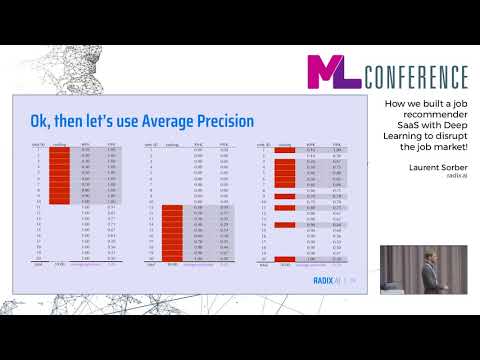Description:
Discover how a team of Machine Learning engineers built a job recommender SaaS using Deep Learning to revolutionize the job market in this 45-minute conference talk. Learn about JobNet, a deep neural network that processes résumés and job descriptions in multiple languages, creating embeddings in a shared space for efficient job seeker and job matching. Explore the modern ML stack utilizing Dask, Sklearn, and TensorFlow, and gain insights into the cloud deployment process using a Continuous Integration pipeline with CircleCI, Terraform, Docker, and AWS ECS. Delve into the architecture of JobNet, including word and document embeddings, CNN techniques, and the Dask-orchestrated task graph. Understand the challenges of measuring recommendation quality and the benefits of Deep Learning in creating useful representations for variable-length inputs. Gain valuable knowledge on automating deployment and ensuring reproducible infrastructure and software in this comprehensive overview of building a disruptive job recommender system.
Read more

How We Built a Job Recommender SaaS with Deep Learning to Disrupt the Job Market
Add to list
#Conference Talks
#MLCon
#Computer Science
#Machine Learning
#Deep Learning
#Artificial Intelligence
#Neural Networks
#Convolutional Neural Networks (CNN)
#Programming
#Cloud Computing
#Software as a Service (SaaS)
#Embeddings
#Data Science
#Data Processing
#Dask